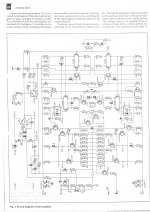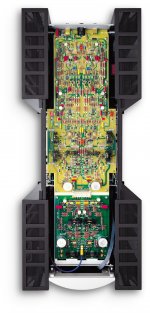I'm interested in building a DIY ribbon loudspeaker in my free time over Christmas break and would like to drive it directly. Following the resolution of some meetings with faculty in the engineering department, I might be able to gain access to the Universities Laser Vibrometer and Anechoic chamber for measurements (and comparison with the RAAL 140-15D)😀
I do not wish to use a transformer, as I believe it may contribute excessive distortion. As a result, I will need a special amplifier to drive the ribbon. The impedance of the ribbon will be almost purely resistive, but very, very, very low. Most of my knowledge in the field of loudspeakers is related to acoustics and the physics of transducers...I haven't yet been able to extend it to amplifier design.
My primary goal for the project is reproducing a Dirac Pulse/Square Wave, so impulse response will be weighted with the highest significance.
Are there any designs available? Can anyone recommend any texts?
How difficult would it be to build a direct drive 10 watt amplifier with negligible distortion (linear and non-linear distortion <20khz)?
Thanks,
Thadman
I do not wish to use a transformer, as I believe it may contribute excessive distortion. As a result, I will need a special amplifier to drive the ribbon. The impedance of the ribbon will be almost purely resistive, but very, very, very low. Most of my knowledge in the field of loudspeakers is related to acoustics and the physics of transducers...I haven't yet been able to extend it to amplifier design.
My primary goal for the project is reproducing a Dirac Pulse/Square Wave, so impulse response will be weighted with the highest significance.
Are there any designs available? Can anyone recommend any texts?
How difficult would it be to build a direct drive 10 watt amplifier with negligible distortion (linear and non-linear distortion <20khz)?
Thanks,
Thadman
I would be interested in attempting this design. Do you have some idea what the resistance of the ribbon will be? Are there other restrictions I should be aware of?
You should know that I cannot build the amp. You will have to take care of that.
You should know that I cannot build the amp. You will have to take care of that.
Not in any meant to discourage but my experience measuring line level transformers is they can have phenomenally low distortion, often lower than the electronics and certainly well below typical transducers. In this application, who knows?
Not in any meant to discourage but my experience measuring line level transformers is they can have phenomenally low distortion, often lower than the electronics and certainly well below typical transducers. In this application, who knows?
I think he's looking at a very low impedance power amplifier, to get around the typical power level transformer used in these types of speakers. I always wanted to try this, too, so I'll be interested in the result. Clearly it will be important to have a good idea what the actual speaker driver impedance will be. Possibly all you need is current gain if the preamp signal voltage level is large enough to drive full power.
I would be interested in attempting this design. Do you have some idea what the resistance of the ribbon will be? Are there other restrictions I should be aware of?
You should know that I cannot build the amp. You will have to take care of that.
That would be fantastic! I would thoroughly enjoy building the amplifier, as it would afford me the opportunity to apply the theory.
The design is not finalized as of yet. It will depend on the foil I'm able to source. However for what it's worth, I expect the element to be a few microns thick, 4-8mm wide, and a few inches long. The element material will be aluminum.
Last edited:
That would be fantastic! I would thoroughly enjoy building the amplifier, as it would afford me the opportunity for some real world experience.
The design is not finalized as of yet. It will depend on the foil I'm able to source. However, I expect the element to be a few microns thick, 4-8mm wide, and a few inches long. The element material will be aluminum.
If you're looking at a tweeter (driver of your dimensions) I would start by working toward a heavy duty unity gain buffer amplifier.
The ribbon in the Maggies is one ohm. Anything close to that would be easy. A very short ribbon would be less, but doable.
The output stage I have posted here already is a power buffer that does not need a front end, or feedback.
The output stage I have posted here already is a power buffer that does not need a front end, or feedback.
Elektor Amp for Ribbons
As menitioned in the Planar forum, there was a construction in Elekto for such an amp.
The articles was published in November and December 1992.
I'm sure you can get a back issue at Elektor, but otherwise, I can maybe make a PDF, and send it on a mail.
It's not a beginners project at all, and I think the construction might be a bit overkill, being able to diliver 160W in 0.4 Ohm.
Actually I think a small Class-d amp would be perfect for the job ..... at the very low voltages needed you could probably make one with a rather high switching frequency if wanted!
See attached schematic of the Elektor amp
As menitioned in the Planar forum, there was a construction in Elekto for such an amp.
The articles was published in November and December 1992.
I'm sure you can get a back issue at Elektor, but otherwise, I can maybe make a PDF, and send it on a mail.
It's not a beginners project at all, and I think the construction might be a bit overkill, being able to diliver 160W in 0.4 Ohm.
Actually I think a small Class-d amp would be perfect for the job ..... at the very low voltages needed you could probably make one with a rather high switching frequency if wanted!
See attached schematic of the Elektor amp
Attachments
Year 😀 but they are still using way fewer than Mark Levinson 😉
No. 33 .... and that's just the input 🙄
No. 33 .... and that's just the input 🙄
Attachments
Last edited:
i think demian (1audio?) has posted some comments regarding some ideas and/or experiments on driving low impedance transducers.
mlloyd1
mlloyd1
thadman
In my opinion you should take a closer look at Steve Dunlap’s buffer output stage “Krill”
With some modifications it should do the job perfectly, I’m sure Steve will help you.
Cheers
stinius
In my opinion you should take a closer look at Steve Dunlap’s buffer output stage “Krill”
With some modifications it should do the job perfectly, I’m sure Steve will help you.
Cheers
stinius
Steves 100watt at low voltage could be interesting
Or would leaving out the gain stage have the same effect?
HUGE heatsinks will be needed, I suppose
Or would leaving out the gain stage have the same effect?
HUGE heatsinks will be needed, I suppose
Last edited:
I would be happy to help. The heat sinking might not be as bad as it first seems considdering the low voltages involved.
Last edited:
Steves 100watt at low voltage could be interesting
Or would leaving out the gain stage have the same effect?
HUGE heatsinks will be needed, I suppose
You got it right tinitus.
Leave out the gain stage use the buffer.
I don’t think you will need “HUGE” heat sinks.
I didn’t see your post Steve, but as you say with that low voltage a “HUGE” heat sink should not be necessary.
Cheers
Last edited:
Leave out the gain stage use the buffer.
I don’t think you will need “HUGE” heat sinks.
Steve said his amp would work without frontend, so I just figured that would be the point
About heatsink
I have a 40watt with a single pair MJL, and it drives anything down close to 2ohm with ease, regardless of the difficult load from passive xo/eq etc
But below 2ohm it gets HOT like a classA
And thats just the beginning of what we talk about here
Steve said his amp would work without frontend, so I just figured that would be the point
About heatsink
I have a 40watt with a single pair MJL, and it drives anything down close to 2ohm with ease, regardless of the difficult load from passive xo/eq etc
But below 2ohm it gets HOT like a classA
And thats just the beginning of what we talk about here
With the low R load we are looking at here I would not recommend a single pair.
Thought I would throw in my two cents, I am driving a pair of custom made ribbons with 4 parallel LM3886's with a 20+/- supply with no problems pure resistive load .9ohms with minimum heat sinking.
I'd be interested in hearing the difference between the two but it's a toss up cost-wise, eh? I'd probably use two or three pairs of output transistors in the buffer to keep the current swing in each modest.
- Home
- Amplifiers
- Solid State
- Direct Drive amplifier for DIY ribbon?

